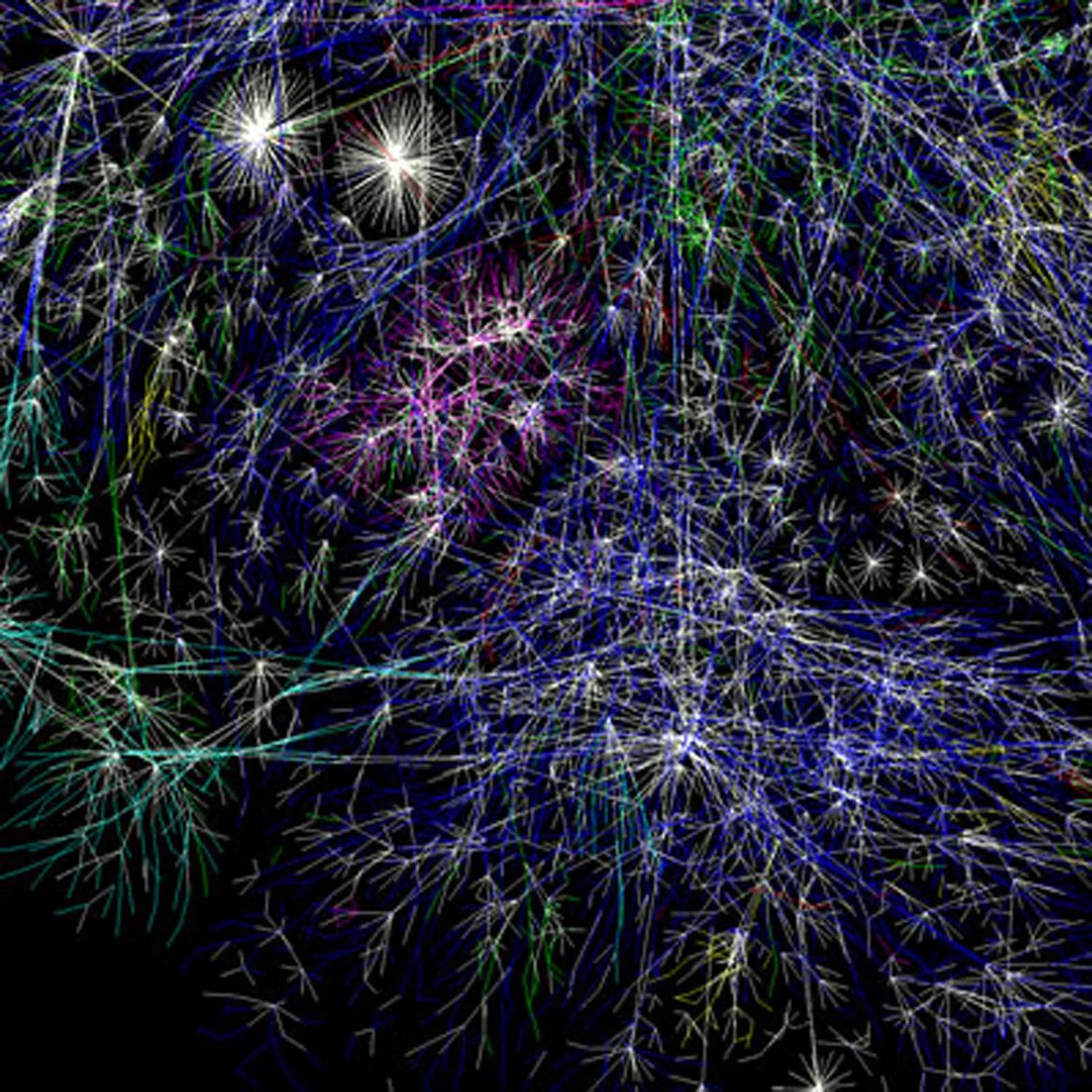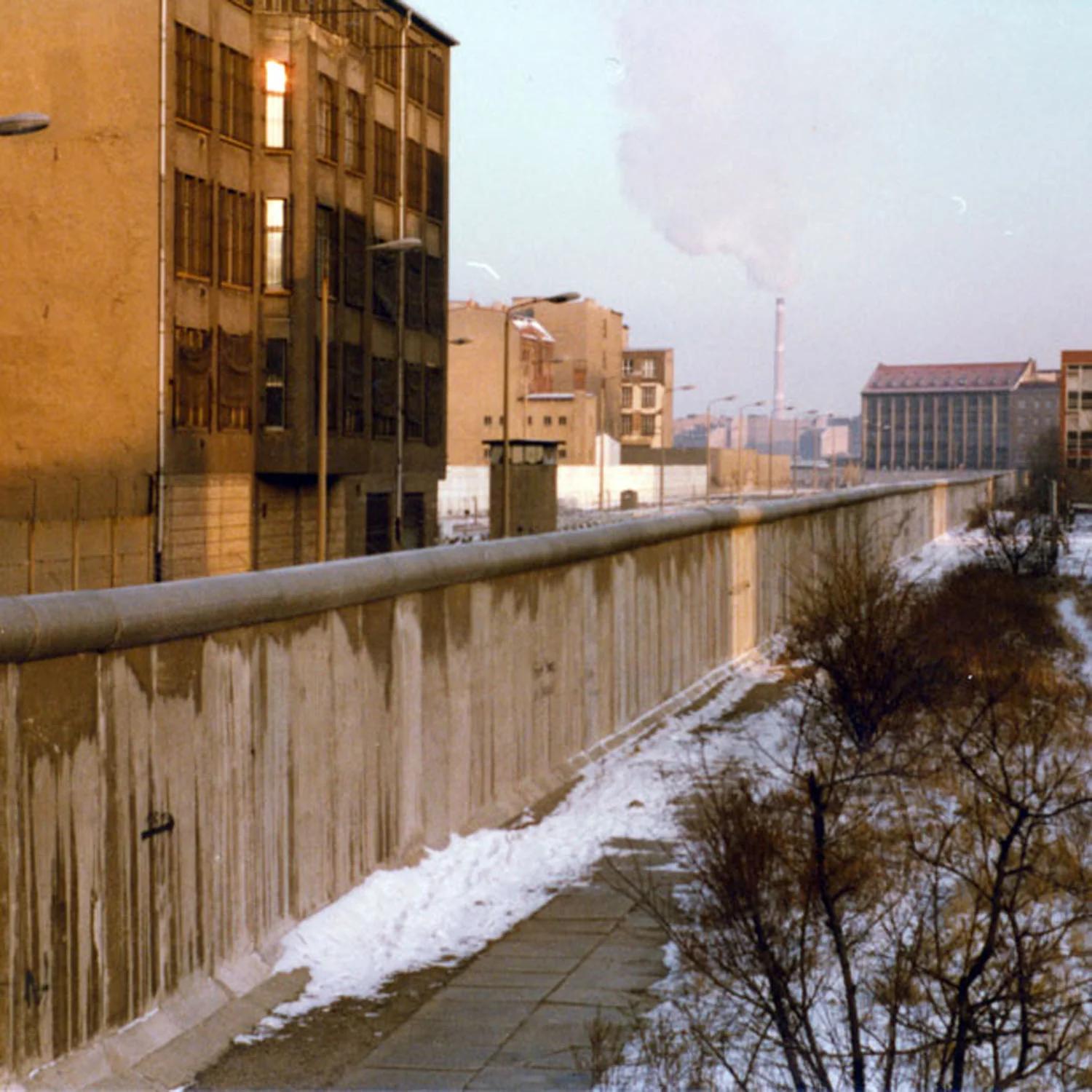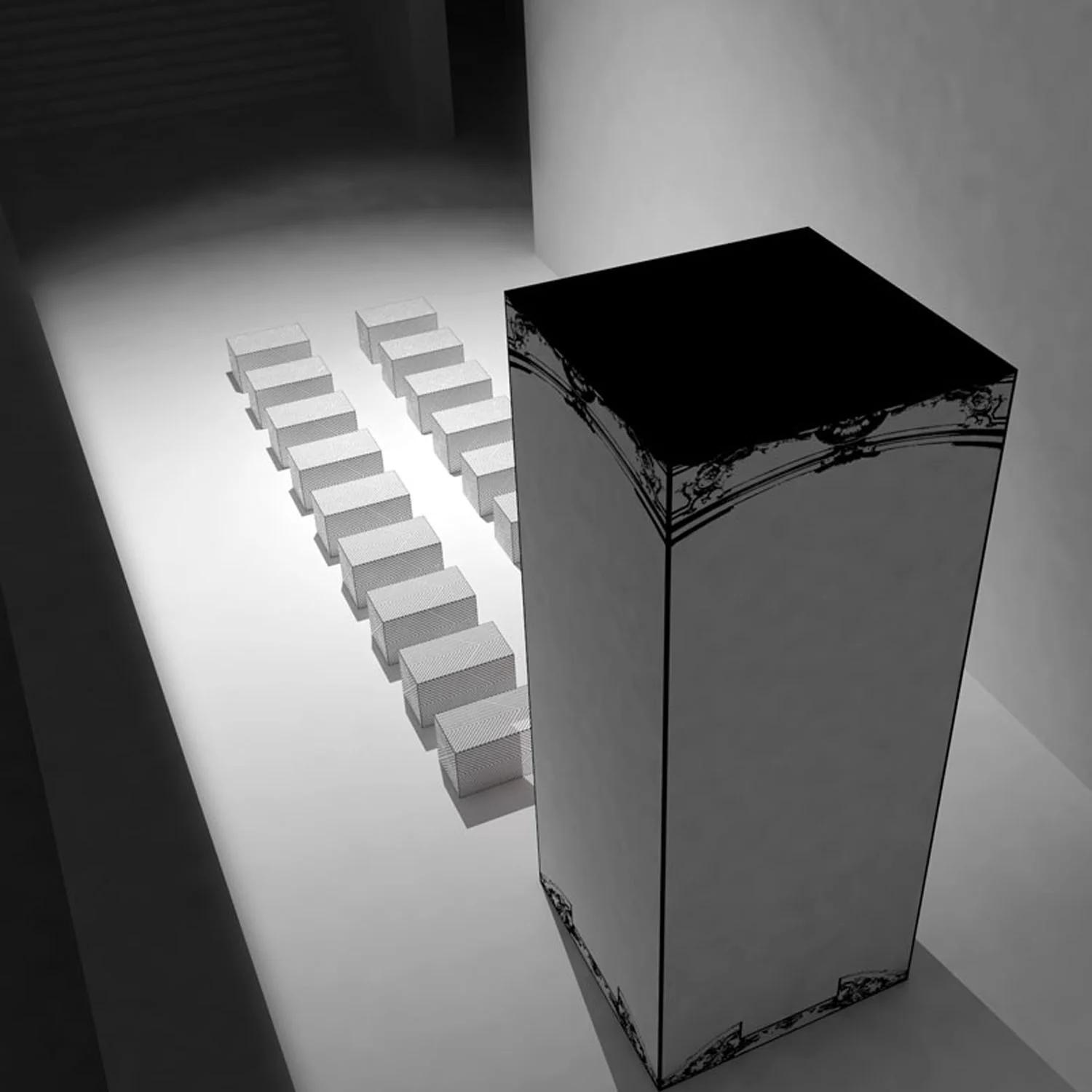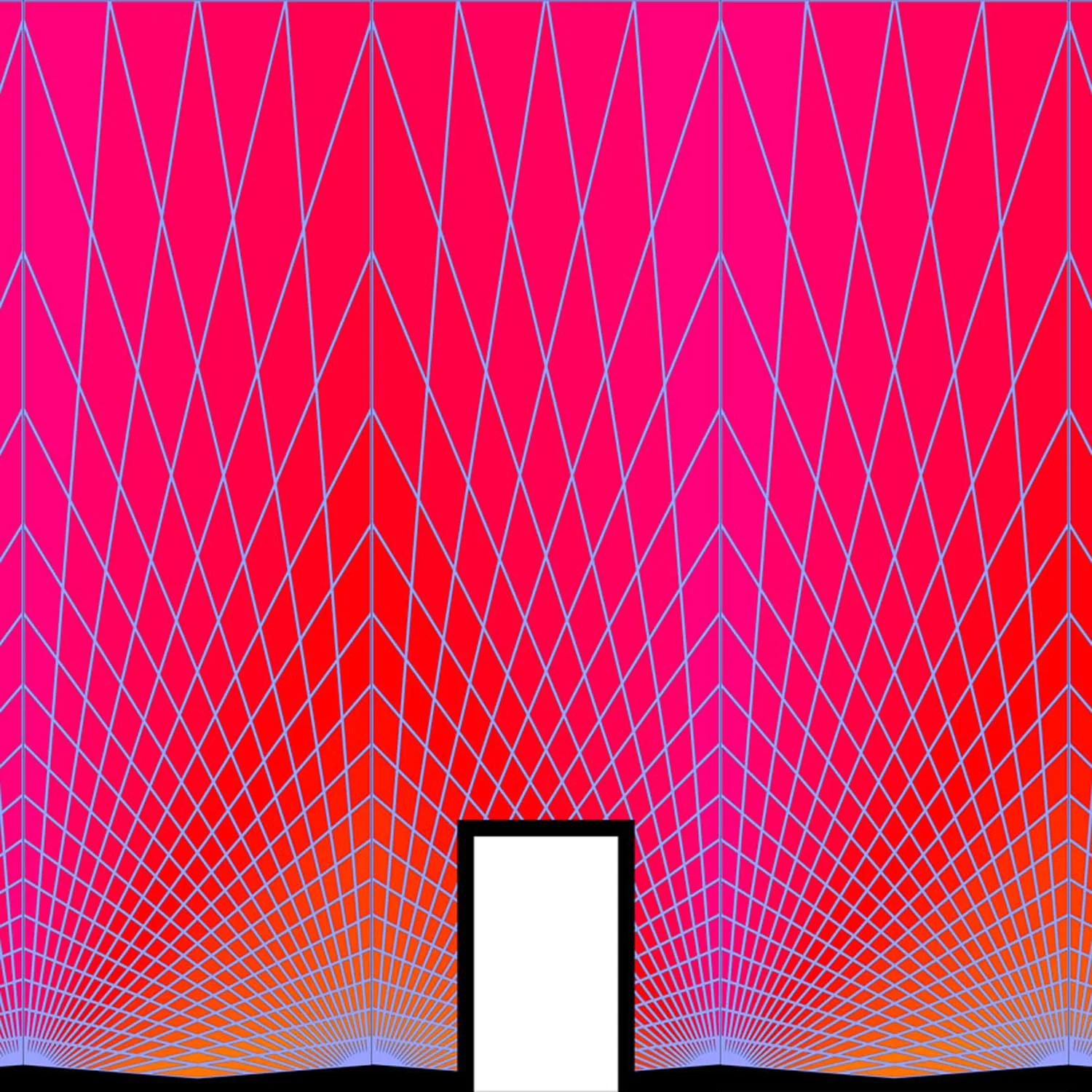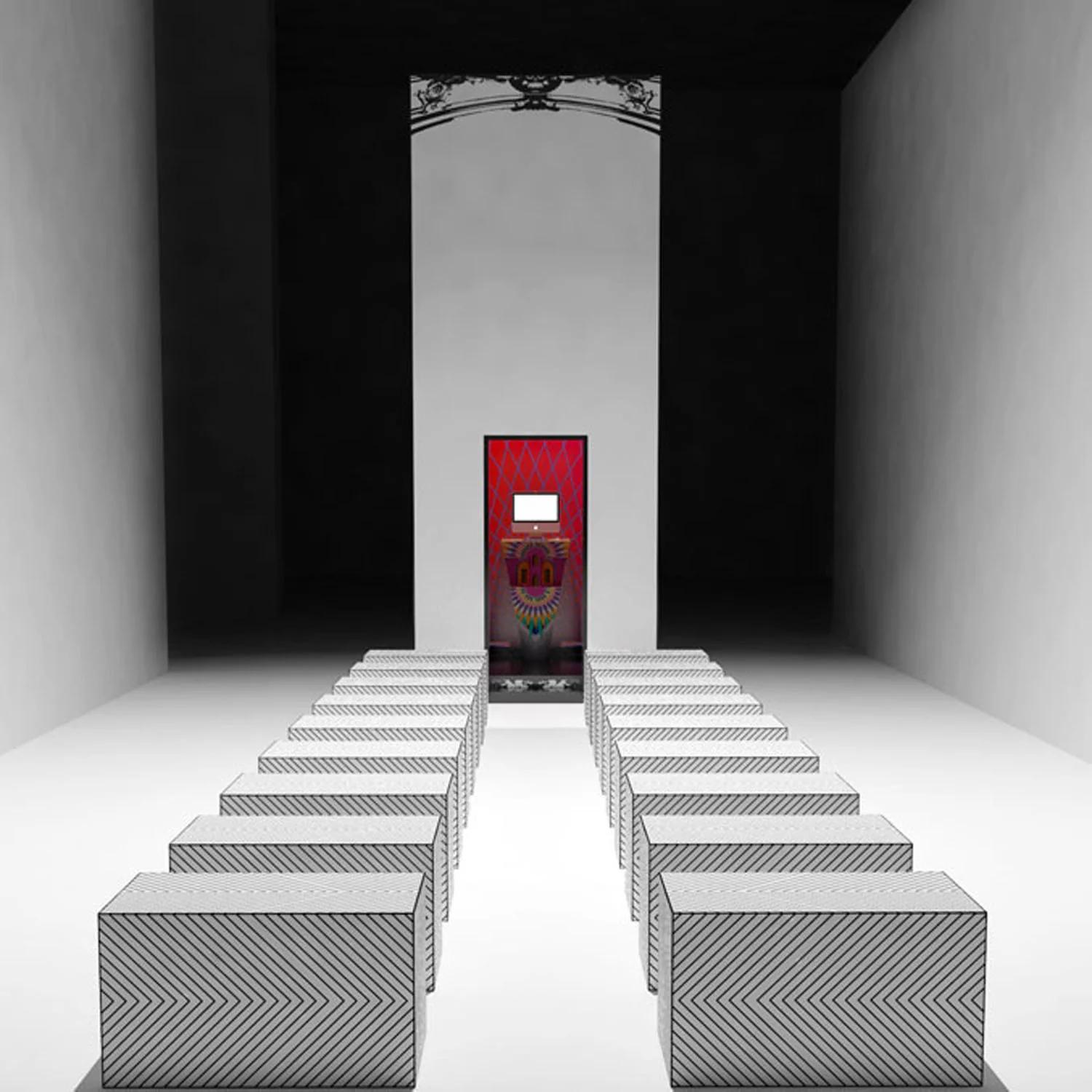This is a proposal by Madam (Marco Ginex and I) for an installation at the inaugural exhibition at the Shanghai Architectural Culture Centre (designed by Ando), for which several practices were invited to develop responses to a given theme in relation to China and its architecture. We were given the theme monumentality, with their explanation:
"The desire for monumentality roots deeply in the spatial politics of China. All design techniques of creating monumentality in history, from ancient Egypt to 19th century new classicism, can be found, adapted to buildings throughout the nation. The aim is to embody the power and imagination of a regime."
We were asked to alter the content and presentation of our proposal. Whilst we were happy to develop the formal themes of the work -the frame of its content- we were not willing to water down the main thrust of the installation, so at least the idea lives on here.
Monumentality is a quality derived from a combination of two factors being inherent in a phenomenon. The first is that its existence affects an unusually large number of people. The second is that those people who it affects are marked in some way deeply and permanently by it. Physical scale is not key -although often present- because Monumentality exists by virtue of the quantity of people and the degree to which they are influence. So for example, while a large building may affect only its immediate residents and environment, a small piece of parchment in the British Library, the Magna Carta, is referred to as the origins of all democracy in the Anglo Saxon world, and is revered, talked about, and Monumentalised by hundreds of millions across four continents.



